Now Playing: MISSION: IMPOSSIBLE
As I've written before, I'm a big fan of the MISSION: IMPOSSIBLE TV series, which successfully aired on CBS from 1966-1973--seven seasons. Tonight I watched two episodes that guest-starred William Shatner. "Cocaine" and "Encore" aired during the 7th and 6th seasons, respectively. Strangely, these shows aired after Shatner's STAR TREK cohort Leonard Nimoy completed his two-season run as a regular, playing a master of disguise and magician named Paris.
The series became famous for its outlandish "stings", cons that the Impossible Missions Force, led by Steven Hill (LAW & ORDER) as Dan Briggs during the first season and Peter Graves as Jim Phelps after that, perpetrated in order to trap the villains of the week. For most of the run, the IMF operated almost always in foreign countries, battling saboteurs, spies, assassins, despotic monarchs behind the Iron Curtain or in Central America. Later in the show, by the time Shatner guest-starred, the series had changed its format a bit, usually pitting the IMF against American gangsters (the "Syndicate") on U.S. soil. The result was that MISSION: IMPOSSIBLE lost much of what made it unique and now looked much like every other cop show on television that was routinely chasing druglords and mobsters.
For plots, M:I still had some doozies up its sleeve. In "Cocaine," Shatner plays Joe Conrad, the right-hand man to druglord Carl Reid (Stephen McNally). Graves and his IMF team, including Greg Morris as Barney, Peter Lupus as Willy and former IRONSIDE co-star Barbara Anderson (who guest-starred opposite Shatner in the STAR TREK episode "Conscience of the King"), need to learn the location of a major drug deal set to go down in less than two days. To do so, they manage to convince Conrad they have invented a machine that creates synthetic cocaine. Yep, a big shiny mechanical contraption (that looks like something drawn by Jack Kirby) that spits out fake cocaine indistinguishable, even under a microscope, from the real thing.
Beyond the wacky concept of the cocaine machine, "Cocaine" doesn't really stand out much, although it's still fun to watch (M:I is always fun to watch, even the lesser episodes). Charles Napier, another former TREK guest star ("The Way to Eden"), is in it, as is BARNEY MILLER's Gregory Sierra. Plus, Anderson looks really beautiful in it.
Next to "Encore," however, "Cocaine" comes across as pretty darned plausible. "Encore"'s story is about as insane and implausible as any TV episode I've ever seen. Dammit, though, if it doesn't work anyway, thanks to the commitment of the M:I cast and crew, which plays it all absolutely straight (M:I rarely showed any humor), and Shatner's sharp performance.
To describe "Encore"'s plot still doesn't express just how ridiculous it is, but I'll try. Shatner is Joseph Kroll, a 65-year-old gangster who still lives in the same New York City neighborhood where he grew up. Law enforcement has never been able to pin a crime on him, so the IMF decides to try to bust him for a 35-year-old murder, in which the victim's body and the murder weapon were never found. They know Kroll did the crime, but need evidence to convict him.
Here's the idea. The IMF knocks Kroll out and administers instant plastic surgery that lasts only for six hours. They make him look like he's 30 again by removing his wrinkles using paraffin (!), dye his hair, and somehow eliminate his limp! They then take him to a movie studio where they have duplicated 1937 New York down to the most minute detail. Only about three square blocks, but it's a good thing Kroll never seems to leave the area anyway. He comes to believe that it's actually the day he's going to commit the murder, and the IMF, in perfect disguise of course, lead him through that day's events, eventually faking the murder and following Kroll when he dumps the body, so they can duplicate Kroll's steps on the actual New York block.
It's a lot to swallow, and Shatner does a nice job with the slow realization that what seems impossible may not be. He doesn't accept his new surroundings too soon or too late. Really, you can't blame Kroll for being fooled, since the IMF must have spent hundreds of thousands of taxpayer dollars to compile props and costumes, build fake sets, hire extras, scour the country for period antiques...even get the airports to stop air traffic over the studio lot and hire a period airplane to fly over.
A good alternate name for the show would be SERVED, since the most satisfying moments often come at the end, when the bad guy gets an unexpected peek behind the magic curtain and realizes that he has been completely and utterly duped, while the IMF drives off and leaves him behind to suffer consequences. At the end of "Cocaine," Shatner actually smiles with respect at the operatives whom he believed to be crooks like himself, while "Encore" effectively ends with Shatner running alone down empty streets, his limp returning and face melting, as he stumbles onto a western street and realizes with mouth agape that he has been totally and utterly served.
Apropos of nothing, but still interesting. Coincidentally, both episodes were written by Harold Livingston, who later penned the screenplay to STAR TREK: THE MOTION PICTURE.

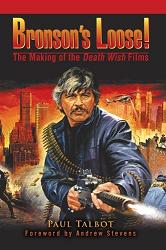 The DEATH WISH franchise is one of genre cinema’s most schizophrenic. Over a 20-year period beginning in 1974, five DEATH WISH movies were theatrically released by four different studios. Even though most of them were set in New York City, filming occurred in three different countries on two continents. And whereas the original film was a serious drama about urban crime and its effects on decent, law-abiding citizens, later entries could hardly have been more cartoonish if their hero had fallen off a cliff and been banged on the head with an anvil. About the only thing all five DEATH WISHes have in common is their star: the venerable Charles Bronson, who finally became a major Hollywood leading man at age 52 after two decades as a character actor and international star.
The DEATH WISH franchise is one of genre cinema’s most schizophrenic. Over a 20-year period beginning in 1974, five DEATH WISH movies were theatrically released by four different studios. Even though most of them were set in New York City, filming occurred in three different countries on two continents. And whereas the original film was a serious drama about urban crime and its effects on decent, law-abiding citizens, later entries could hardly have been more cartoonish if their hero had fallen off a cliff and been banged on the head with an anvil. About the only thing all five DEATH WISHes have in common is their star: the venerable Charles Bronson, who finally became a major Hollywood leading man at age 52 after two decades as a character actor and international star.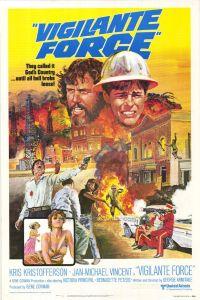 Here's a trashy action movie produced not by Roger Corman, but by his brother Gene, who was also a prolific Hollywood producer whose projects were usually a little classier and budgets a little higher than Roger's.
Here's a trashy action movie produced not by Roger Corman, but by his brother Gene, who was also a prolific Hollywood producer whose projects were usually a little classier and budgets a little higher than Roger's. I think picking 17 Oscars correctly is my new record, although I think I was helped by a bunch of no-brainers among this year's nominations. The only major shock of the night was the Original Song award to HUSTLE AND FLOW, and I don't think CRASH was expected to overcome BROKEBACK MOUNTAIN for Best Picture. I don't know why the Independent Spirit Awards continue to exist, since the same films nearly always make up the Academy Award nominations.
I think picking 17 Oscars correctly is my new record, although I think I was helped by a bunch of no-brainers among this year's nominations. The only major shock of the night was the Original Song award to HUSTLE AND FLOW, and I don't think CRASH was expected to overcome BROKEBACK MOUNTAIN for Best Picture. I don't know why the Independent Spirit Awards continue to exist, since the same films nearly always make up the Academy Award nominations.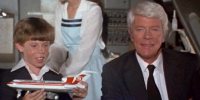 It's still kinda funny to see Peter Graves' perplexed acceptance of the movie's success. It's no secret that Graves was very apprehensive about doing AIRPLANE! He thought the humor was tasteless and didn't understand why the three directors wanted him, an actor known for playing very straight action and dramatic roles, to be in it. All the way through shooting, Graves didn't get the humor, and really winced at all the "ever been to a Turkish bath" stuff. It wasn't until the first screening, which his wife dragged him to, that he realized, from listening to the audience's loud laughter, that the movie genuinely was funny.
It's still kinda funny to see Peter Graves' perplexed acceptance of the movie's success. It's no secret that Graves was very apprehensive about doing AIRPLANE! He thought the humor was tasteless and didn't understand why the three directors wanted him, an actor known for playing very straight action and dramatic roles, to be in it. All the way through shooting, Graves didn't get the humor, and really winced at all the "ever been to a Turkish bath" stuff. It wasn't until the first screening, which his wife dragged him to, that he realized, from listening to the audience's loud laughter, that the movie genuinely was funny.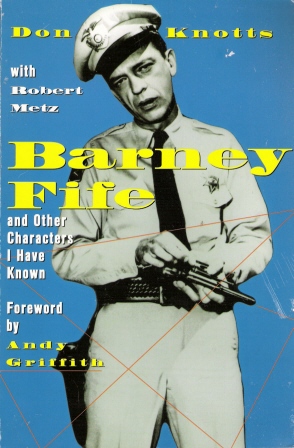
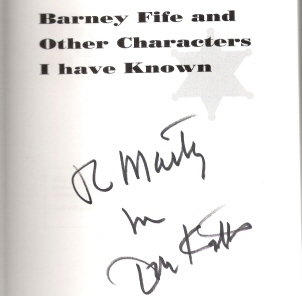
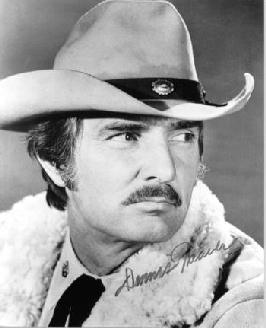 Goddammit. Would someone please stop killing all of our badass 80-year-old actors? Whoever took the quickenings of Don Knotts, Darren McGavin and Dennis Weaver is a helluva lot stronger...and cooler...tonight, that's for sure.
Goddammit. Would someone please stop killing all of our badass 80-year-old actors? Whoever took the quickenings of Don Knotts, Darren McGavin and Dennis Weaver is a helluva lot stronger...and cooler...tonight, that's for sure.